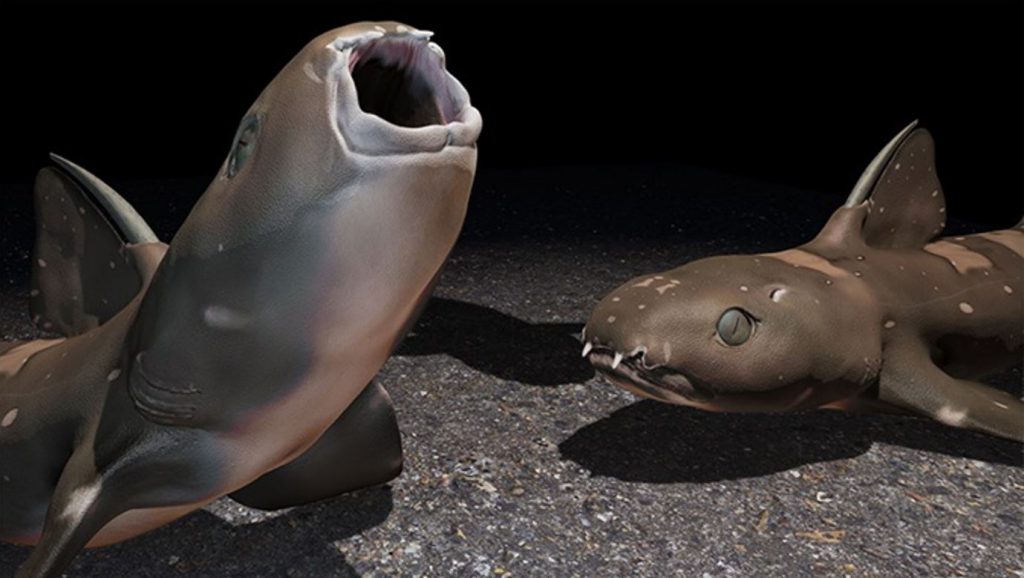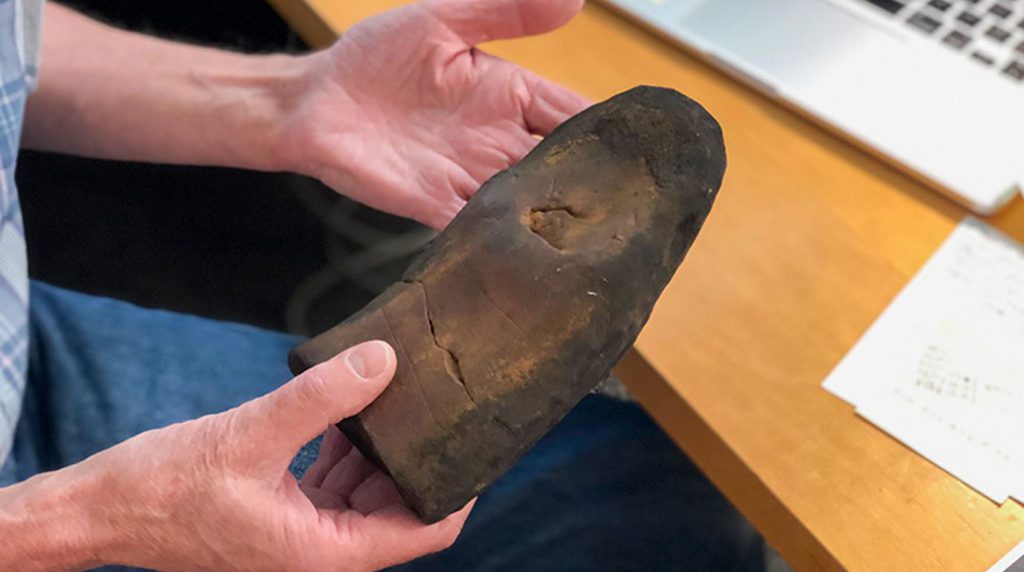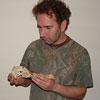The rocks of Wardie beach hide the remains of animals that lived 335 million years ago. The fossils of bony fishes, sharks and one amphibian have been collected since the 19th century, but only recently has it become possible to reconstruct their skeletons using X-ray computed-tomography.
A new study just published in the journal Science Advances uses these cutting-edge techniques to shed new light on how early sharks fed.

Piecing together how extinct animals lived and moved is no easy task. Fossils are rarely complete, so important information is usually missing. Even when fossil skeletons are complete, they are often crushed and the individual bones are no longer in the position they would have been in life. All of these uncertainties make it difficult to imagine how the bones would have moved together in a three-dimensional sense.
Fortunately, fossils found in some locations are very well preserved and quite complete, usually because of the environment in which the animal died and was buried. Wardie Beach in north Edinburgh is one such site.
Fossil fishes have been known from Wardie for well over a hundred years. The reason they are so well preserved is that they were encased in hard nodules when they died. The shape of the nodules often gives some idea of the fossil they may contain, because of the way the nodule formed around the animal after it was buried.
The traditional way to find out if a nodule actually does contain a fossil fish is to hit it with a large hammer. Needless to say, this doesn’t do the fossil any good, even if it is very satisfying for the fossil hunter. These days, X-ray computed-tomography (X-ray CT) means there is no need to shatter the Wardie nodules to find out what might lie inside.
Because Wardie nodules have been collected for so long, National Museums Scotland holds a large collection of them, and many of them have turned out to be the first, or holotype, specimens of species that were new to science. These collections are now stored not much more than a fossil’s throw away from Wardie, at the National Museums Collections Centre in Granton.
Professor Mike Coates of the University of Chicago is also a Research Associate at National Museums Scotland. His research investigates early fishes, including sharks, many of which were very different to sharks that are alive today. Many years ago my predecessor, Dr Bobby Paton, handed one of the Wardie nodules to Prof. Coates. This particular nodule was striking – it looks like the head of a large snake, complete with eyes and nostrils!
Mike was quick to recognise the potential of X-ray CT analysis for the unbroken Wardie nodules, and set to work to find out what secrets they might hold. He spent several days in our collections and selected a large number of unsplit nodules that I sent to him in Chicago in a large crate.

These specimens turned out to be an important addition to science. Although the skeletons they contained were flattened, Prof. Coates’ team was able to reconstruct the cartilages into the positions they would have been in life.
The ‘snake head’ nodule proved to be particularly interesting. It contained the head of a shark called Trystichius arcuatus. When the head was reconstructed, the researchers were surprised to find that this particular shark had an advanced method of feeding using suction. Up to that point, the first evidence of this kind of feeding adaptation in bony fishes was some 50 million years later. You can read more about Prof. Coates’ research and see animations of how this shark’s jaws worked here.
Many of the Wardie nodules Prof. Coates investigated had been stored in our collections for decades, waiting for new technology that would unlock their secrets. I wonder which of our specimens will provide the next scientific advance, perhaps with some new technology that has yet to be imagined?
